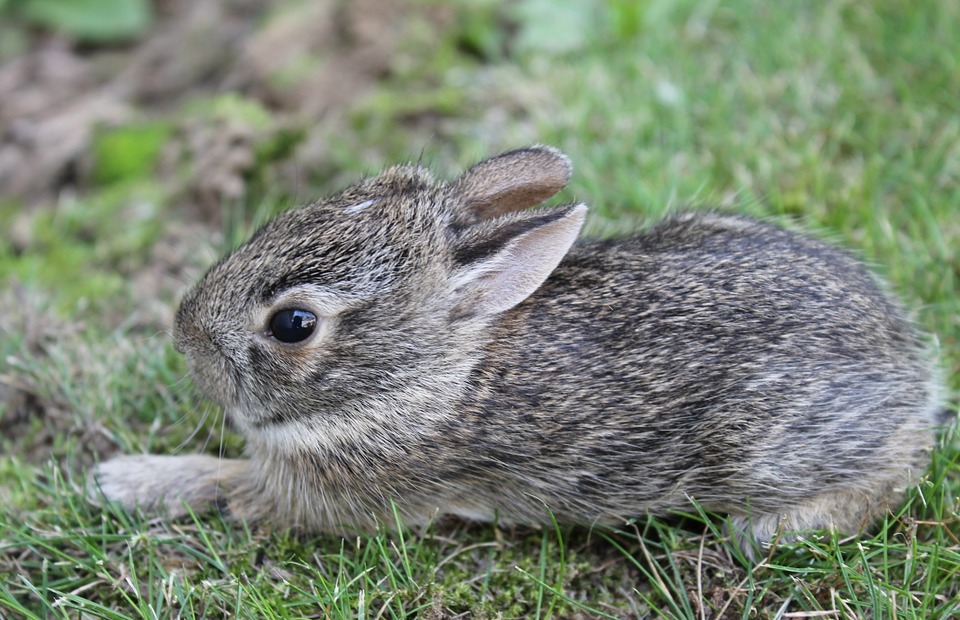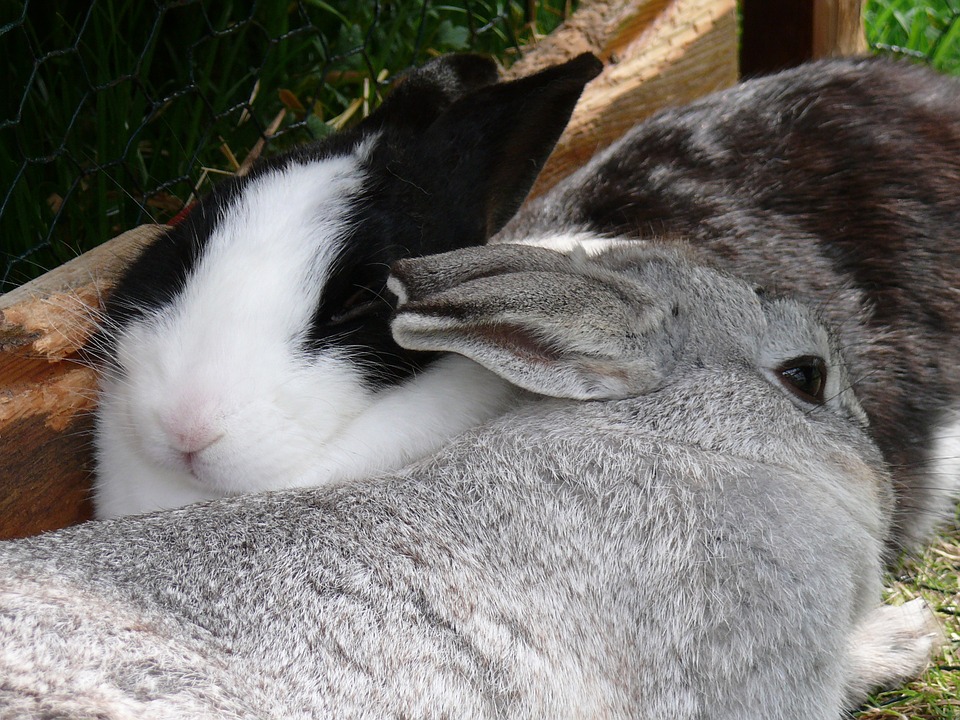Part 1: Understanding the Biology of Rabbit Relationships

1.1 The Evolution of Rabbit Behaviour
Rabbits have evolved to prioritize survival and reproduction, their behaviour shaped by natural selection to ensure the continuation of their species.- Adapting to Environments: Their adaptability has allowed them to thrive in diverse environments, influencing their social structures and mating habits.
- Predator Avoidance: Rabbits are prey animals, making them particularly sensitive to potential threats. Their social systems help them detect predators and protect their young.
- Reproductive Strategies: Their reproductive strategies, including rapid gestation and multiple offspring, are designed to maximize their chances of survival in unpredictable environments.
1.2 The Role of Hormones and Physiology
Rabbit behaviour is strongly influenced by hormones, particularly during mating seasons. These hormonal fluctuations drive their instincts and shape their interactions with other rabbits.- Estrogen and Testosterone: The release of these hormones triggers specific behaviours in both male and female rabbits, influencing their mating readiness and social dynamics.
- Seasonal Cycles: Rabbit mating behaviour often peaks during specific seasons, driven by environmental factors like daylight hours and food availability.
- Physiological Triggers: Mating is triggered by physiological cues like scent marking and visual signals, initiating a chain reaction of hormonal changes and behavioural shifts.
Part 2: Exploring the Social Structures of Rabbits

2.1 The Dynamics of Rabbit Colonies
Rabbits are social animals, living in colonies with established hierarchies and complex social dynamics. These social structures play a crucial role in their mating behaviour and overall survival.- Dominance Hierarchies: Within a colony, dominant males typically control access to resources, including mating opportunities.
- Territorial Behaviour: Dominant males defend their territories, often using scent marking to signal their presence and deter rivals.
- Communication Systems: Rabbits communicate through a combination of vocalizations, body language, and scent signals, allowing them to navigate their social dynamics effectively.
2.2 The Impact of Social Hierarchies on Mating
Social hierarchies influence the mating patterns within rabbit colonies, with dominant males often having access to a larger number of females.- Reproductive Advantage: Dominant males have a higher chance of passing on their genes, leading to the continuation of their lineage.
- Competition for Mates: Subordinate males may face competition for mating opportunities, potentially resulting in territorial disputes and social conflicts.
- Cooperative Breeding: In some cases, female rabbits may mate with multiple males within a colony, potentially increasing the genetic diversity of their offspring.
Part 3: Deciphering Rabbit Mating Behaviour
3.1 The Process of Rabbit Reproduction
Rabbit reproduction is characterized by a swift and efficient process, driven by hormonal triggers and physiological adaptations.- Induced Ovulation: Female rabbits release eggs only after mating, maximizing their reproductive efficiency.
- Rapid Gestation: Their gestation period is relatively short, lasting approximately 30 days, allowing for frequent breeding cycles.
- Litter Size: Rabbits typically give birth to multiple offspring per litter, increasing their chances of survival and ensuring the continuation of their lineage.
3.2 The Role of Scent and Visual Signals
Rabbits rely heavily on scent and visual signals to communicate their availability for mating and attract potential partners.- Scent Marking: Rabbits use scent glands to mark their territory, communicating their reproductive status and attracting mates.
- Visual Cues: Certain postures and behaviours, like thumping their hind legs or displaying their genitals, serve as visual signals for potential mates.
- Scent and Visual Communication: These communication methods work together to create a complex system for attracting partners, negotiating mating opportunities, and establishing social dominance.
Part 4: The Influence of Human Intervention on Rabbit Relationships
4.1 Domestication and Selective Breeding
Domesticated rabbits have undergone significant changes compared to their wild counterparts, influencing their social behaviour and mating habits.- Selective Breeding for Traits: Humans have bred rabbits for specific traits like size, coat type, and temperament, potentially altering their natural instincts and social dynamics.
- Reduced Social Complexity: Many domesticated rabbits live solitary lives, lacking the intricate social interactions of their wild counterparts, which can affect their mating behaviours and relationships.
- Controlled Environments: Human intervention in their environment, including housing conditions and diet, can influence their hormonal balance and mating cycles.
4.2 Understanding the Impact of Domestication
It's important to recognize the impact of domestication on rabbit behaviour to provide them with a supportive environment that meets their needs.- Socialization: Early socialization is vital for domesticated rabbits, helping them develop positive social skills and reduce potential aggression.
- Appropriate Housing: Providing sufficient space, hiding areas, and opportunities for interaction can help them maintain their natural behaviours and form healthy relationships.
- Nutrition and Health: A balanced diet and regular veterinary care are crucial for ensuring their overall well-being, including hormonal balance and reproductive health.
Part 5: Dispelling the Myth of Lifelong Bonds in Rabbits
5.1 The Human Perspective on Rabbit Relationships
The belief that rabbits mate for life stems from human tendencies to anthropomorphize animal behaviour and project human emotions onto them.- Emotional Projection: We often interpret animal behaviour based on our own emotional experiences, leading to misinterpretations of their true intentions.
- Romantic Idealization: The concept of lifelong commitment is a powerful human ideal, often influencing our perception of animal relationships.
- Lack of Scientific Understanding: A limited understanding of rabbit behaviour has contributed to the perpetuation of this myth.
5.2 Approaching Rabbit Behaviour with Scientific Accuracy
By viewing rabbit behaviour through an objective lens, acknowledging their natural instincts, and considering their evolutionary history, we can gain a more accurate understanding of their relationships.- Observational Studies: Research into rabbit behaviour has provided valuable insights into their social dynamics and mating habits.
- Ethological Perspective: Examining rabbit behaviour through an ethological lens allows us to interpret their actions within their natural context and understand their motivations.
- Challenging Assumptions: We must challenge our own assumptions about rabbit relationships and strive for a more nuanced understanding of their behaviour, based on scientific evidence.
Part 6: Exploring the Complexities of Rabbit Relationships
6.1 Beyond Mating: Bonds and Social Dynamics
While rabbits may not mate for life in the traditional sense, they can form strong bonds with their partners and companions.- Pair Bonding: In some cases, rabbits may develop lasting relationships with specific individuals, often involving grooming, cuddling, and shared nesting activities.
- Social Hierarchies: Within colonies, rabbits establish social hierarchies, with dominant individuals leading the group and influencing mating opportunities.
- Communication: Rabbits communicate through a variety of vocalizations, body language, and scent signals, enabling them to navigate their social dynamics and maintain their relationships.
6.2 Signs of Affection and Companionship in Rabbits
Rabbits exhibit affectionate behaviours that demonstrate their social bonds and connection with their companions.- Mutual Grooming: Grooming each other is a common sign of bonding, demonstrating trust and affection.
- Cuddling: Rabbits may snuggle close to their partners or companions, seeking comfort and warmth.
- Playful Behaviour: Engaging in playful activities together strengthens their bond and fosters positive interactions.
Part 7: FAQs
Q1: What are the signs of a healthy rabbit relationship?
Healthy rabbit relationships are characterized by positive social interactions, mutual grooming, cuddling, and playful behaviour. Rabbits should appear comfortable and relaxed around each other, showing no signs of aggression or dominance issues.
Q2: How can I tell if my rabbit is bonded to another rabbit?
Signs of bonding include mutual grooming, cuddling, and shared nesting activities. They may also exhibit playful behaviours together, showing signs of enjoyment and comfort in each other's presence.
Q3: Can two male rabbits live together?
While it's possible, it can be challenging as male rabbits can be territorial. Introducing them slowly and carefully monitoring their interactions is essential for a harmonious living situation. Providing sufficient space, hiding areas, and neutral zones can help reduce tension.
Q4: How can I help my rabbit develop a bond with another rabbit?
Early socialization is crucial, as it helps rabbits develop positive social skills. Providing opportunities for interaction, such as shared playtime and mealtimes, can facilitate bonding. It's important to introduce them slowly and monitor their interactions closely, ensuring a safe and comfortable environment for both rabbits.
Q5: Are there any benefits to having two rabbits together?
Having bonded rabbits can provide companionship and enrichment for both animals. It can help them stay active, reduce loneliness, and promote their overall well-being.
Q6: Can rabbits get lonely?
Yes, rabbits are social animals and can experience loneliness if they lack adequate companionship. Providing opportunities for interaction, whether with other rabbits or their human companions, is crucial for their emotional well-being.
Q7: How do I introduce two rabbits?
Introducing rabbits slowly and carefully is essential. Start by allowing them to sniff each other under a door or through a cage divider. Gradually increase their interaction time, monitoring their behaviour closely for signs of stress or aggression. Providing a neutral space for their initial meetings can help reduce territorial tension.
Q8: What should I do if my rabbits fight?
If your rabbits show signs of aggression, separate them immediately. Consult a veterinarian or a rabbit-savvy professional for guidance on managing their interactions and creating a harmonious living environment. It's important to address any underlying issues that may be contributing to the aggression, such as competition for resources or lack of adequate space.
Everyone is watching
-

Do Rabbits Lay Eggs? (The Surprising Truth)
OTHER TYPES OF PETSThis article will unravel the common misconception that rabbits lay eggs, exploring the fascinating world of r...
-

What's a Group of Rabbits Called? (A Comprehensive Guide)
OTHER TYPES OF PETSThis article delves into the fascinating world of rabbits, exploring the various terms used to describe a grou...
-

Can Rabbits Eat Grapes? A Guide to Safe Rabbit Treats
OTHER TYPES OF PETSThis comprehensive guide will explore the safety and suitability of grapes for rabbits, providing detailed inf...
-

Predators That Hunt Rabbits: A Guide to Natural Enemies
OTHER TYPES OF PETSI've always been fascinated by the circle of life, that delicate dance between predator and prey. Growing up ...
-

Are Rabbits Nocturnal Animals?
OTHER TYPES OF PETSThe question of whether rabbits are nocturnal animals is a fascinating one, with a surprisingly complex answer...
